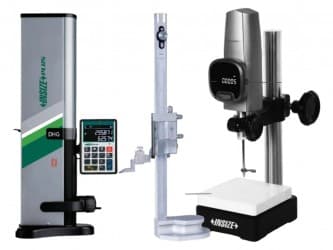Electrical Testing
Featured Brands
Electrical
testing refers to the process of assessing the electrical characteristics and
performance of electrical components, systems, or equipment. It involves using
various instruments and techniques to measure, analyze, and verify electrical
parameters to ensure safety, functionality, and compliance with standards. Here
are some common electrical testing methods:
1. Voltage Testing: Voltage testing involves measuring the voltage level in
electrical circuits to verify proper operation, identify potential issues, or
ensure compliance with specified voltage ranges.
2. Current Testing: Current testing is performed to measure the flow of
electric current in a circuit. It helps in assessing the load, detecting
faults, and ensuring proper functioning of electrical systems.
3. Resistance Testing: Resistance testing is used to measure the resistance
of electrical components or conductors. It helps identify faulty or damaged
components and ensures the desired resistance values are met.
4. Continuity Testing: Continuity testing is performed to check the
integrity of electrical connections and determine if there is a continuous path
for electric current flow. It is commonly used to identify open circuits or
faulty wiring.
5. Insulation Testing: Insulation testing is conducted to assess the
insulation resistance of electrical insulation materials or systems. It helps
detect insulation breakdown, leaks, or weaknesses that could lead to electrical
hazards or malfunctions.
6. Grounding Testing: Grounding testing ensures the effectiveness of
electrical grounding systems. It verifies the resistance between the grounding
system and the earth, ensuring proper safety and protection against electrical
faults.
7. Power Quality Testing: Power quality testing involves analyzing various
aspects of electrical power, such as voltage fluctuations, harmonics, power
factor, and transient events. It helps diagnose power quality issues that can
affect equipment performance and electrical system efficiency.
8. Protective Device Testing: Protective device testing includes testing
circuit breakers, fuses, relays, and other protective devices to ensure they
operate correctly during fault conditions and provide proper protection to the
electrical system.
9. Infrared Thermography: Infrared thermography uses thermal imaging cameras
to identify temperature variations in electrical components and systems. It
helps detect hotspots, loose connections, or overloaded circuits that may
indicate potential failures or hazards.
Electrical testing is crucial for ensuring the safety,
reliability, and efficiency of electrical systems and equipment. It is
typically performed by trained technicians or engineers using specialized
electrical testing instruments and following relevant industry standards and guidelines.
Regular testing and maintenance help prevent electrical failures, reduce
downtime, and ensure optimal performance of electrical systems.





.jpg&w=640&q=75)
.jpg&w=640&q=75)
.jpg&w=640&q=75)
.jpg&w=640&q=75)




